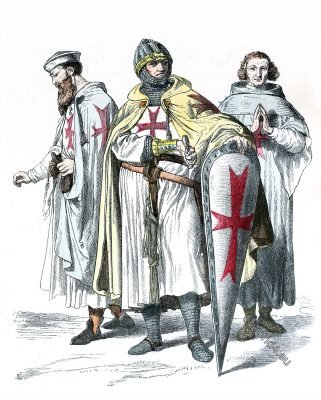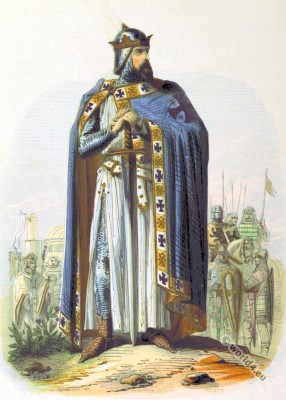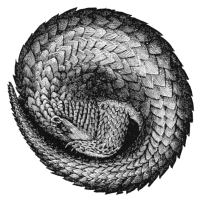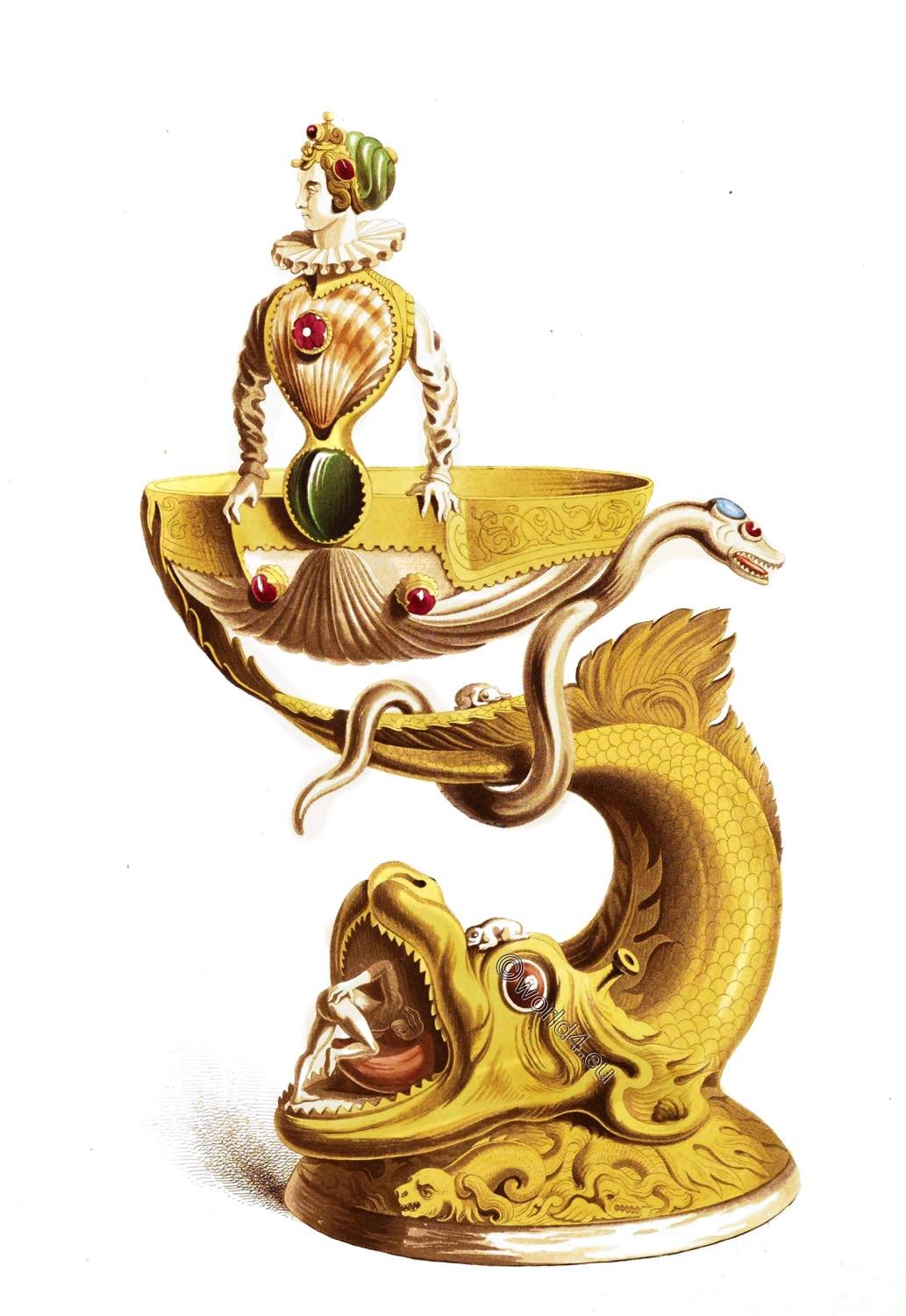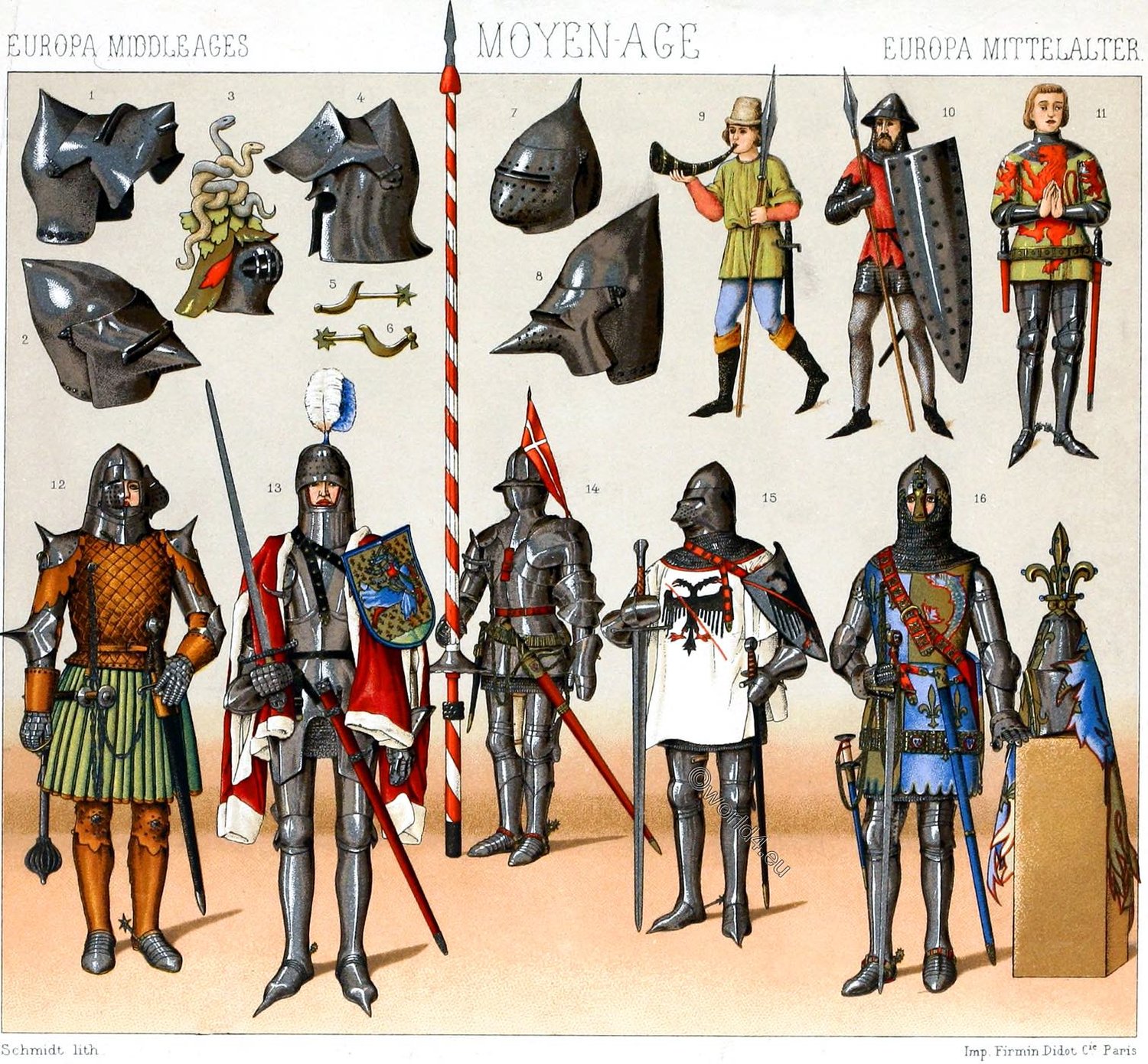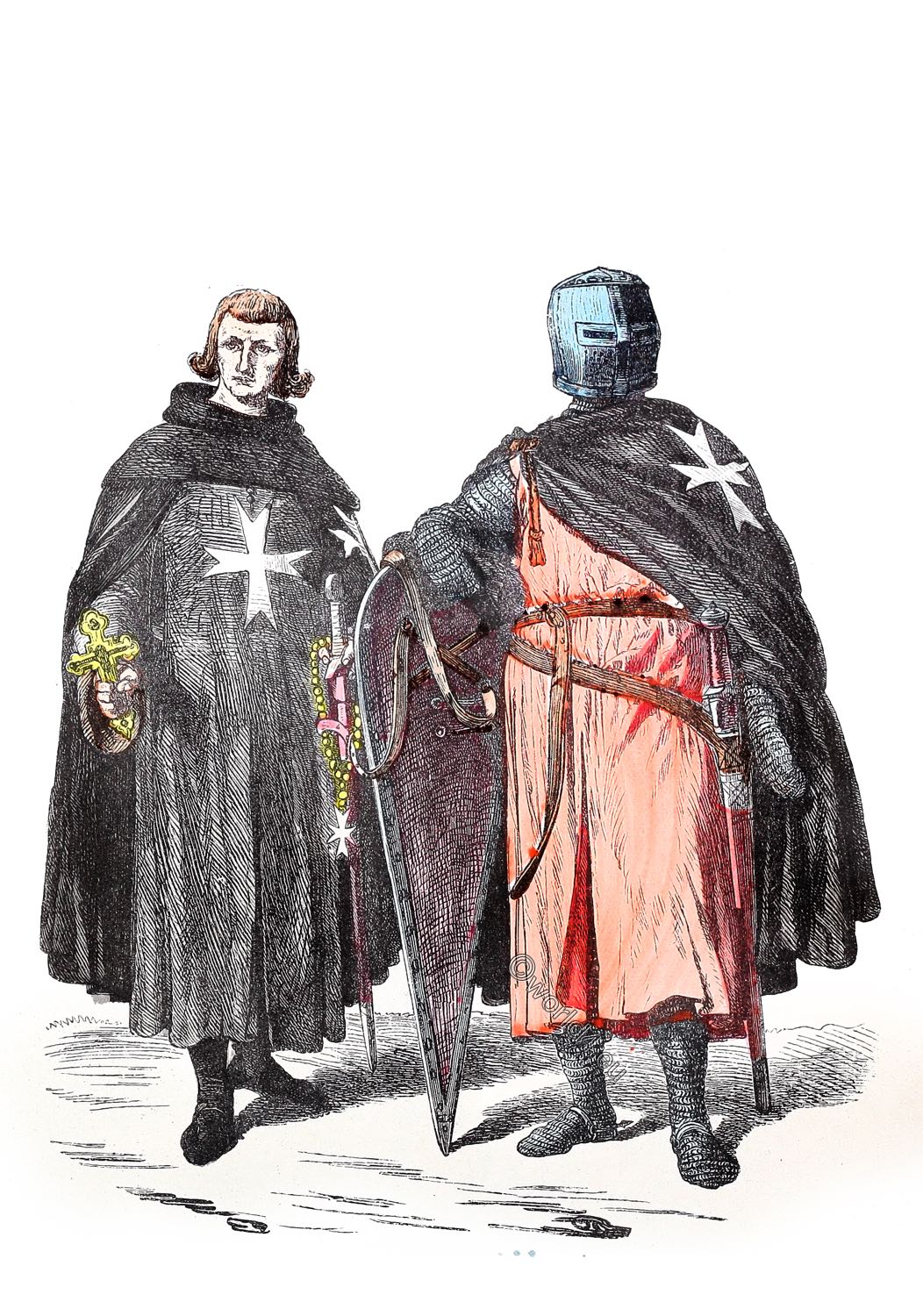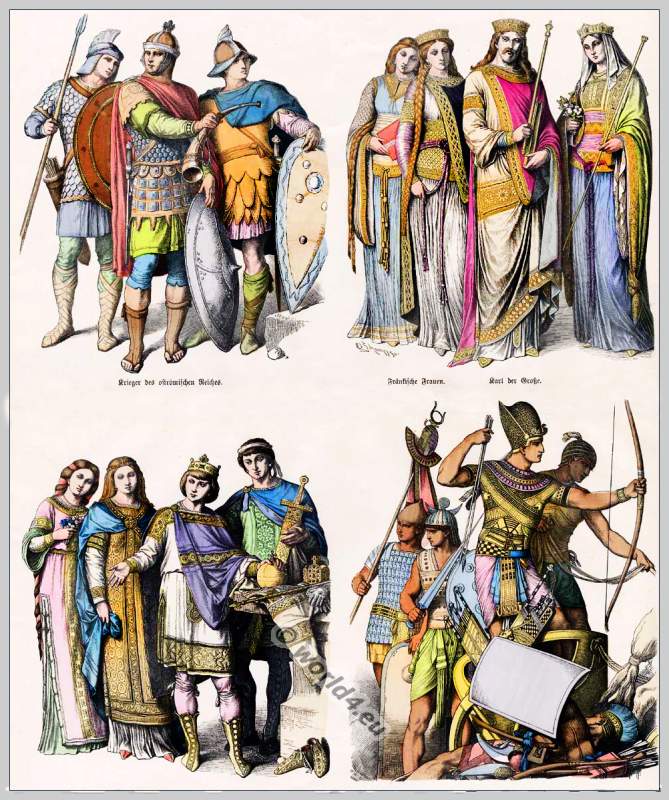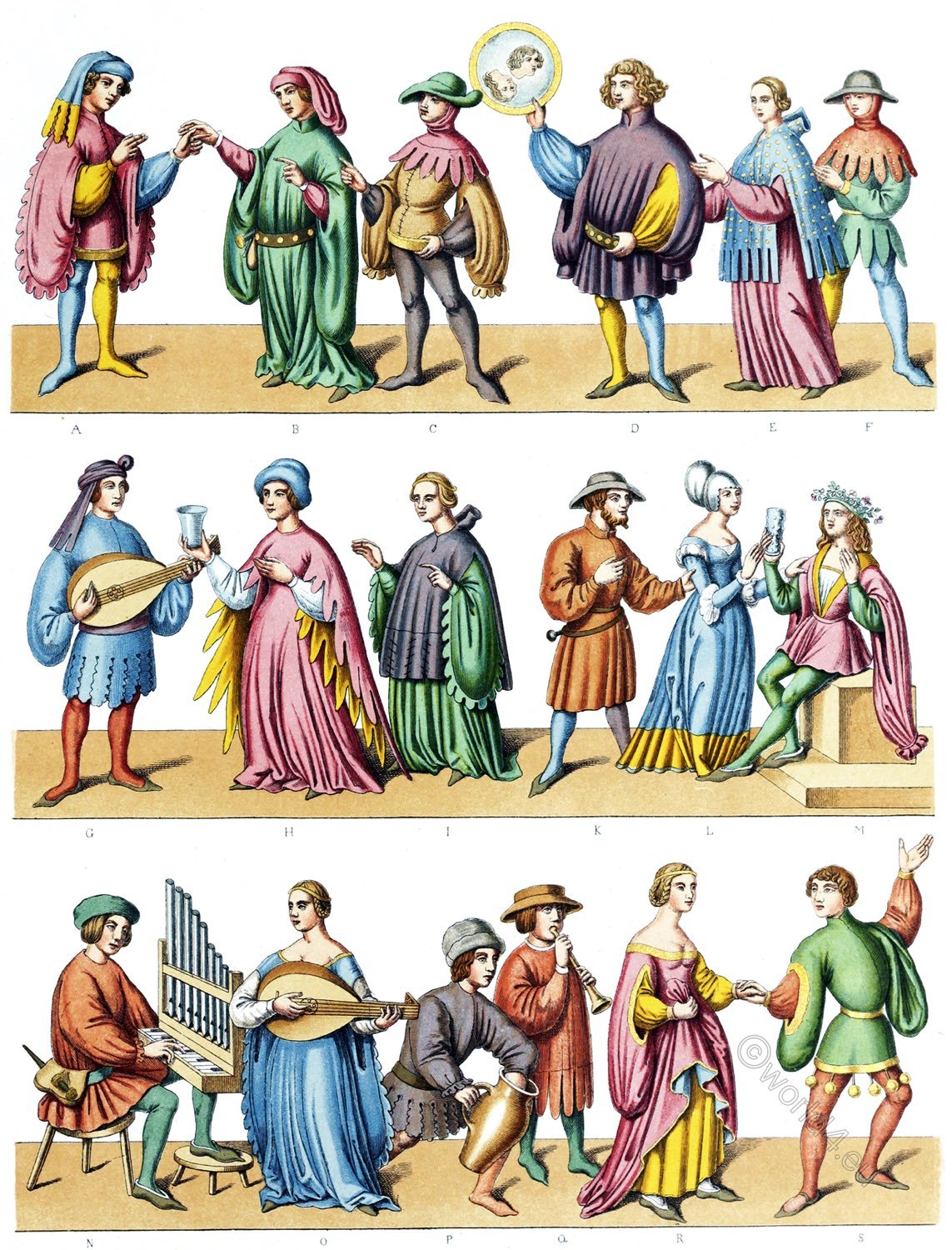The Knights Templar. Medieval Military Religious Orders.
Foundation of the Order of the Temple — St. Bernard aids the Order—Constitution of the Order — St. Bernard’s account of the Templars — The Christian power in the East weakened — The Second Crusade — The siege of Damascus — Letter of a Knight Templar — Exploits of the Templars in Palestine
Foundation of the Order of the Temple
“The firmest bulwark of Jerusalem was founded on the Knights of the Hospital, and of the Temple, the strange association of a monastic and military life.” — Gibbon.
It was during the brief tenure of Jerusalem and the Holy Land by the Christian kings, set up after the successful issue of the First Crusade, that the Order of the Knights Templar had its beginning. There does not seem to have been in the origin of this Order any special care of pilgrims at Jerusalem, as was the case with the Hospitallers. It was from the first a purely military foundation; but bound by religious vows, and under the strictest discipline.
The earliest names in connection with the Order are those of Hugh de Payens and Geoffrey de St. Omer, who, with seven other gentlemen, dedicated themselves as the Poor Soldiers of Jesus Christ, to fight in defense of the Holy Places, and to keep the roads to them free and safe for pilgrims. In addition to this they took the usual three vows of poverty, chastity, and obedience, after the manner of Canons Regular.
St. Bernard aids the Order
In A.D. 1118, during the reign of Baldwin II, King of Jerusalem, a house was granted them upon Mount Moriah, where the Temple had stood. From this house they came to be known as the Knights Templars. The first Templars were brave and tried soldiers, who had already done good service during the Crusade, and their reputation and the honorable object of their brotherhood soon attracted kindred spirits to their side.
At first they were very poor, and their seal represented two knights riding upon one horse. St. Bernard was at this time in the zenith of his reputation, and Baldwin, seeing the value of such an Order for the maintenance of the Latin kingdom in the East, sent a deputation of two knights to solicit his intercession with the Pope for the authoritative establishment of the Templars. Bernard gladly assisted the scheme, and through his influence the Order was formally recognized at the Council of Troyes, a.d. 1128.
Constitution of the Order
The rule and statutes of the Order were drawn up by Bernard himself, founded as far as possible upon the Cistercian rule, and were therefore of the strictest and most ascetic character.
The brethren were to be regular and constant in public and private devotions, to speak little, to give alms, to be gentle and courteous to the weak, the aged, the sick, to observe the fast days, and never to have anything but a spare and frugal diet. The garment of the knights was to be white, to remind them “to commend themselves to their Creator by a pure life.” No gold or silver was to be upon their bridles, armor, or spurs; no hunting or hawking was permitted. Probationers were to be well tried before they were permitted to enter the Order and take the vows, and no person was to be admitted till he was of years of discretion. Transgressions of the rule were to be punished with severity, by stripes, temporary separation of the offender from his brethren, and other penalties.
* *( Unlike other Religious Orders, they wore their beards long. Their habit was originally white, signifying the purity of life to which they were called, but soon after a red cross was added, to remind them that they must be ready to shed their blood for the defense of the faith and for the servants of Christ )
After the confirmation of the Order and its rule by the Pope, Hugh de Payens travelled through France and came to England. Noblemen and gentlemen soon joined him, and gifts of money and lands came in freely, and King Stephen himself favored the Order.
In France men of the highest rank enrolled themselves; but no favor was shown to them on account of their birth and blood; all were equal as Templars, and those who had been guilty of crimes or excesses were required to make reparation and undergo prolonged probation. Some even of royal blood left their dominions and retired to the ranks of the Templars, and almost every country in Europe soon had its house and branch of the Order.
Bernard continued his support, and published a treatise, “In praise of the new Chivalry,” addressed, “to Hugh, Knight of Christ, and Master of the Knighthood of Christ; “in which he contrasts the temper and habits of ordinary knights and their warfare with the high and noble aims and practice of the Knights of the Temple, and concludes with a high-flown apostrophe to Jerusalem as the seat of this Order, “the mistress of the nations, and the glory of the Christian people.”
St. Bernard’s account of the Templars
Alas, how often have good men’s high hopes and ideals been frustrated and broken down! “The Templars,” says St. Bernard, “live together in an agreeable but frugal manner, without wives or children, or having anything in property to themselves, even so much as their own will. They are never idle, nor rambling abroad ; and when they are not in the field marching against the infidels, they are either fitting up their arms and the harness of their horses, or else employing themselves in pious exercises by order of their superior.
An insolent expression, immoderate laughter, or the least murmur, does not pass without a severe correction. They detest cards and dice, they are never allowed the diversion of hunting, or useless visits; they abominate all shows, drolleries, discourses, or songs of a loose nature ; they bathe but seldom, are generally in an undress, their face burnt with the sun, and their look grave and solemn.
When they are entering into an engagement, they arm themselves with faith within and with steel without, having no ornaments, either upon their dress or upon the accoutrements of their horses; their arms are their only finery, and they make use of them with courage, without being daunted, either at the number or force of the barbarians; all their confidence is in the Lord of Hosts ; and in fighting for His cause, they seek a sure victory, or a Christian and honorable death.”
Christian power in the East weakened
In A.D. 1129, Hugh de Payens, having seen his Order established in almost every country in Europe, and daily increasing in numbers and influence, returned to Palestine at the head of a considerable body of knights; and plans were immediately arranged for the protection and extension of the Latin kingdom.
Hugh de Payens, the first Grand Master, died in A.D. 1136, and was succeeded by Lord Robert, son-in-law of Anselm, Archbishop of Canterbury, who, after the death of his wife, had taken the vows and habit of the Templars. But evil times were coming upon the Christians in the East. The Mahometans had found a new and able leader in Zinghis, who, with his son Noureddin, aroused them to fresh activity and aggression.
Several battles were fought, in all of which the Christians were defeated, and city and fortress, one after another, fell into the hands of the followers of the prophet, till at last the important stronghold of Edessa was captured, and the Christian dominion in Palestine was in the greatest peril.
An appeal was made to the Pope, who commissioned Bernard to preach a Second Crusade. A general chapter of the Templars was held in Paris, A.D. 1146, at which the King of France, Louis VII, the Pope, Eugenius III, and a multitude of bishops, and nobles from every country of Christendom, together with 130 Templars, were present.
It was on this occasion that the Templars placed upon their white habits and mantles the red cross, already referred to, which became henceforth the distinguishing badge of the Order, so that they were commonly called Red Friars, or Red Cross Knights.
See also: King Richard and the third crusade. The Knights of english history.
The Second Crusade. The siege of Damascus.
In the following year the Second Crusading army marched, the rear being protected by the Templar Tinder Everard de Barres, who was now Grand Master, and we are told by the French chronicler, Odo, the king’s chaplain, that the whole army was edified by the high and noble example of military discipline, frugality, and temperance set by the Templars.
The campaign began with the siege of Damascus, and Louis, King of France, and Conrad, Emperor of Germany, joined their armies to stem the advancing torrent of the enemy. But the Mahometans were almost everywhere victorious, and the Christians reduced to the greatest straits.
Letter of a Knight Templar
The following extract from a letter sent by the Templars to their Master, who had returned to France with King Louis, will best explain their condition :—” Since we have been deprived of your beloved presence we have had the misfortune to lose in battle the Prince of Antioch, and all his nobility. To this catastrophe has succeeded another.
The infidels invaded the territory of Antioch, and drove all before them. On intelligence of this our brethren assembled in arms, and went to the succor of the desolated province. We could only get together one hundred and twenty knights, and one thousand serving brothers and hired soldiers. Your paternity knows our extreme want of money, cavalry and infantry, and we earnestly implore you to rejoin us as soon as possible, with all the necessary succors for the Eastern Church, our common mother Scarcely had we arrived in the neighborhood of Antioch, when we were hemmed in by the Turcomans on the one side, and the Sultan of Aleppo on the other. The greater part of those whom we led are dead.
We conjure you to bring all our knights and serving brothers, capable of bearing arms. Perchance with all your diligence, you may not find one of us alive. Use therefore all imaginable celerity; pray forget not the necessities of our house, they are such that no tongue can express them. It is also of the last importance to announce to the Pope, the King of France, and all the princes and prelates of Europe the approaching desolation of the Holy Land, to the intent they may succor us in person, or send us subsidies.
Whatever obstacles may be opposed to your departure, we trust to your zeal to surmount them, for now hath arrived the time for perfectly accomplishing our vows in sacrificing ourselves for the defense of the Eastern Church, and the Holy Sepulchre.” On receipt of this melancholy letter, the Master, not feeling himself equal to cope with the difficulties of the situation, resigned his office, and retired to the Monastery of Clairvaux, and Bernard de Tremelay, a nobleman of high rank and distinguished reputation as a soldier was elected to succeed him (a.d. 1151).
In the mean time the Mahometan army advanced upon Jerusalem, and for a time encamped upon the Mount of Olives, till, having been defeated in a pitched battle, they retired again beyond the Jordan. Shortly after this the Templars attempted, unaided and alone, to storm the city of Ascalon, and having breached the walls, they penetrated to the very centre of the town, but were then overpowered by numbers, and were slaughtered to a man.
Related
Discover more from World4 Costume Culture History
Subscribe to get the latest posts sent to your email.

